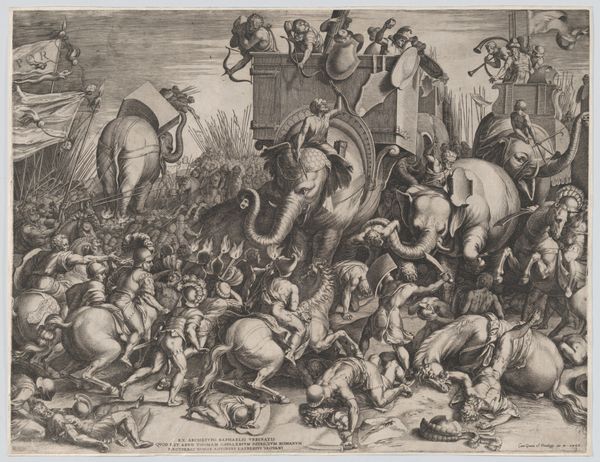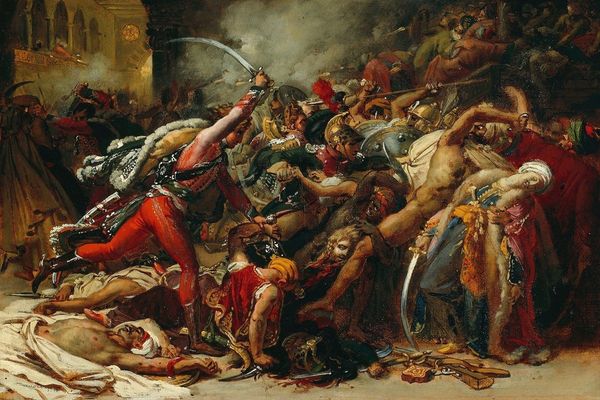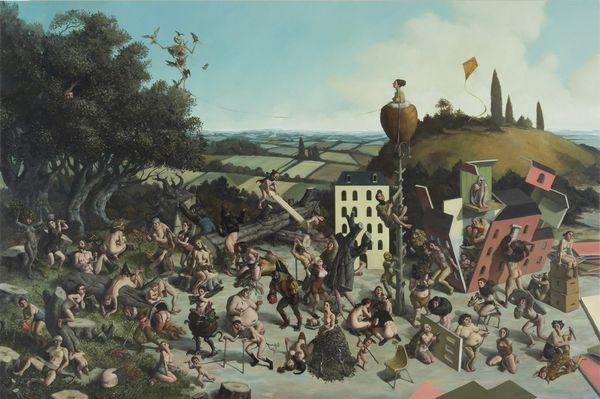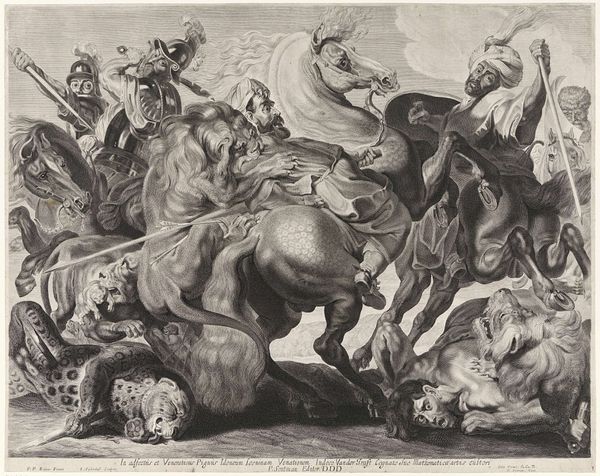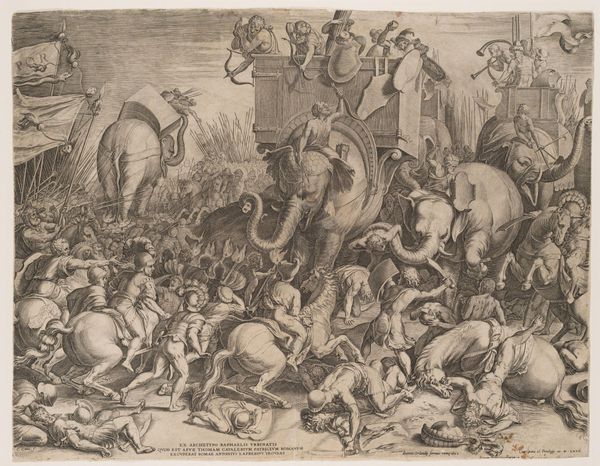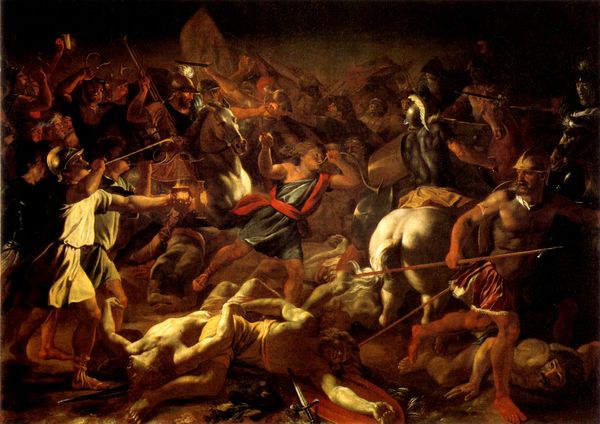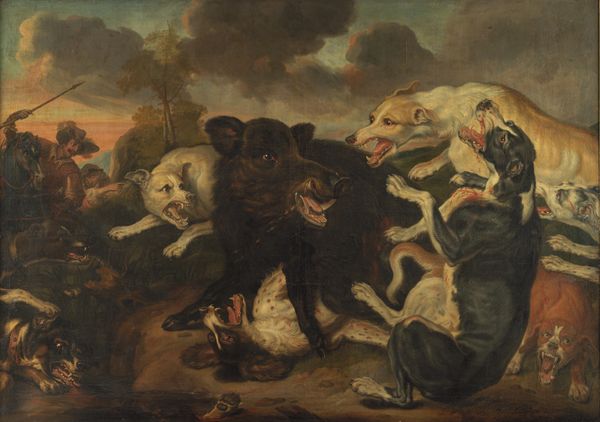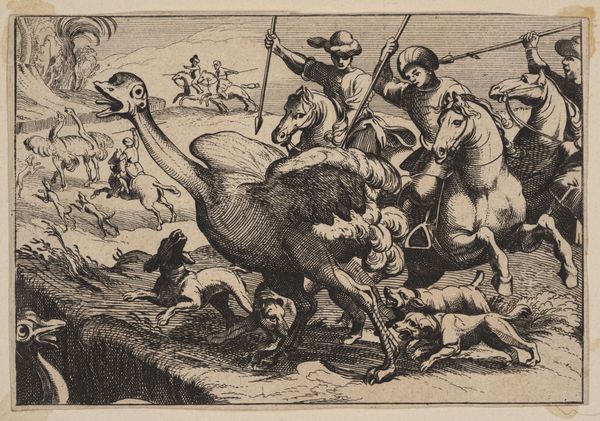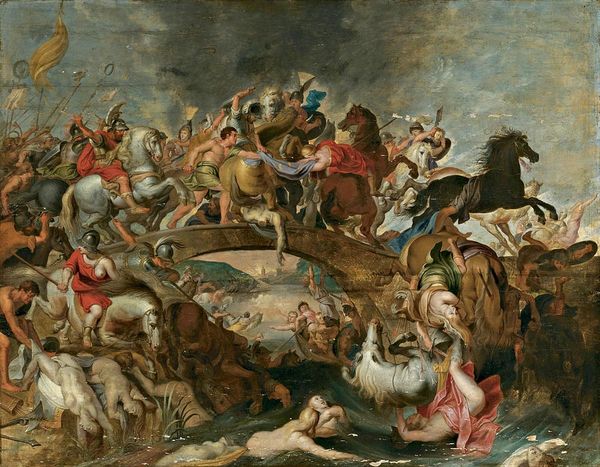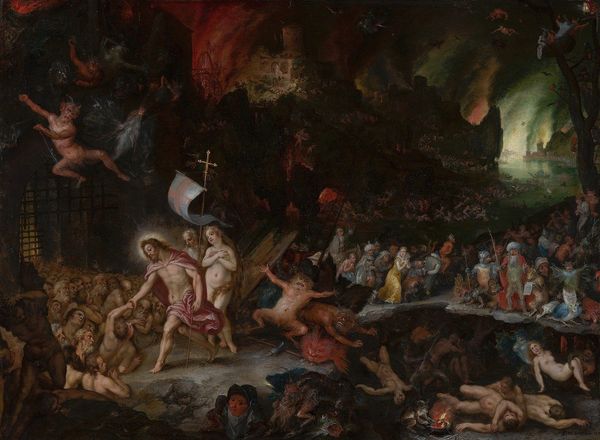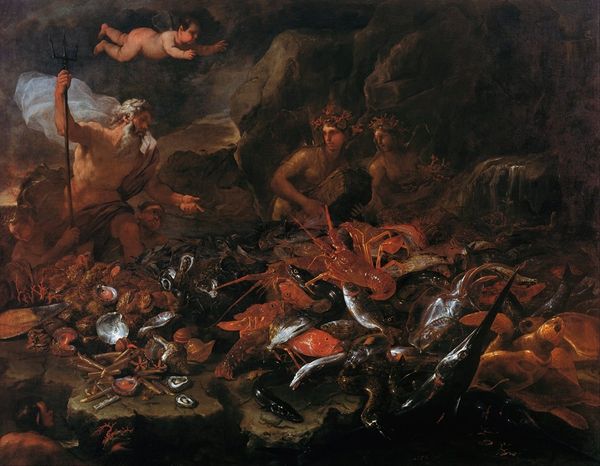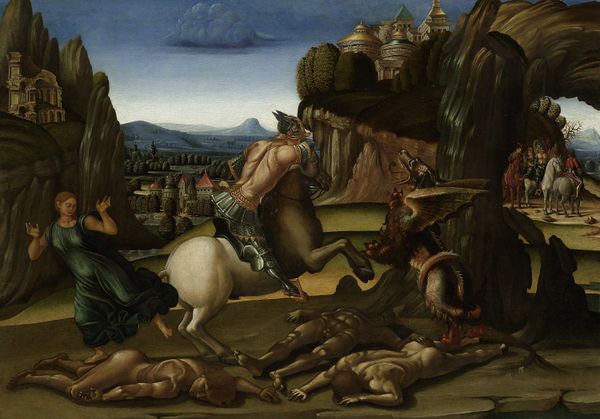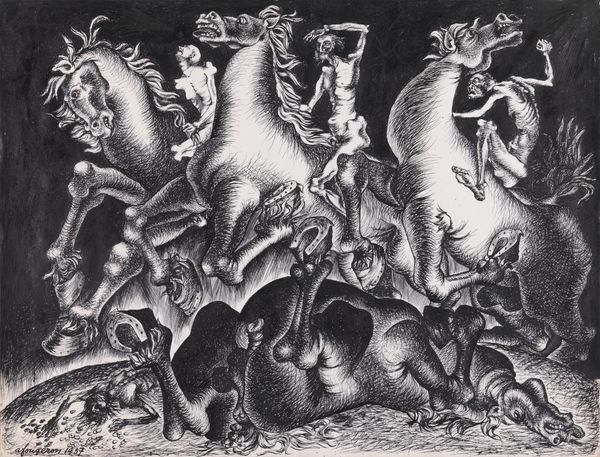
painting
#
painting
#
mannerism
#
figuration
#
genre-painting
#
history-painting
Dimensions: 23 1/4 × 16 13/16 in. (59 × 42.7 cm)
Copyright: Public Domain
Curator: Let's turn our attention now to "The Battle of Zama," a painting rendered after 1567, currently residing here at the Art Institute of Chicago. The artist, Cornelis Cort, offers us a dynamic glimpse into this pivotal historical moment. What’s your initial response, as you stand before it? Editor: Overwhelming! And theatrical, like a meticulously staged opera, though one erupting in chaos. The light seems to pick out details at random, almost spotlighting the absurd little dramas amidst the larger carnage. The elephants feel like hulking set pieces. Curator: Cort, entrenched in the Mannerist style, uses the visual vocabulary available during the period. I find it fascinating to observe the construction of battle scenes. The figures, arranged in dense, swirling patterns, draw from a tradition rooted in tapestry design and processional displays – think civic events, courtly rituals and popular drama translated to painting. Editor: It’s so… stylized. The battle itself almost seems secondary to the act of depicting a battle. There's a certain detachment that undercuts any sense of visceral horror. More an elaborate game. Curator: But there's intent here. Cort made prints, suggesting his understanding of multiplication of his artworks in different formats. The detailed rendering must be linked with that reproductive logic in service to wealthy patrons wanting accessible and shareable imagery. The elephant is depicted for a European market where it was not common. Editor: It makes one think about how battles get packaged, doesn't it? How trauma turns into entertainment, or propaganda, or a simple heroic narrative. Is that what this artwork is ultimately trying to say? Curator: Perhaps its intention is tied to its commission, designed to impress an audience of the elite patrons eager for such imagery and reminders of both triumph and sacrifice in civic life. We mustn't shy away from examining how history is constructed through imagery, with artists navigating their patronage while showcasing impressive skill. Editor: A heady concoction, this one! An engagement with past and present that sparks so many thoughts of modern times, and about how little some things actually change through the passing of ages. Curator: Precisely, it offers a way into exploring so many strands of both what was happening, and continues to happen today in both artistic expression and social awareness.
Comments
No comments
Be the first to comment and join the conversation on the ultimate creative platform.
